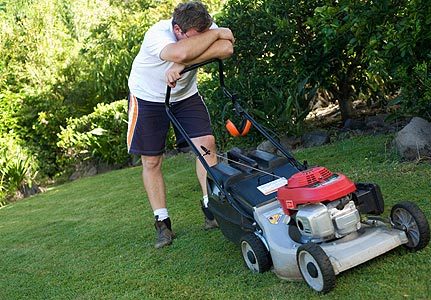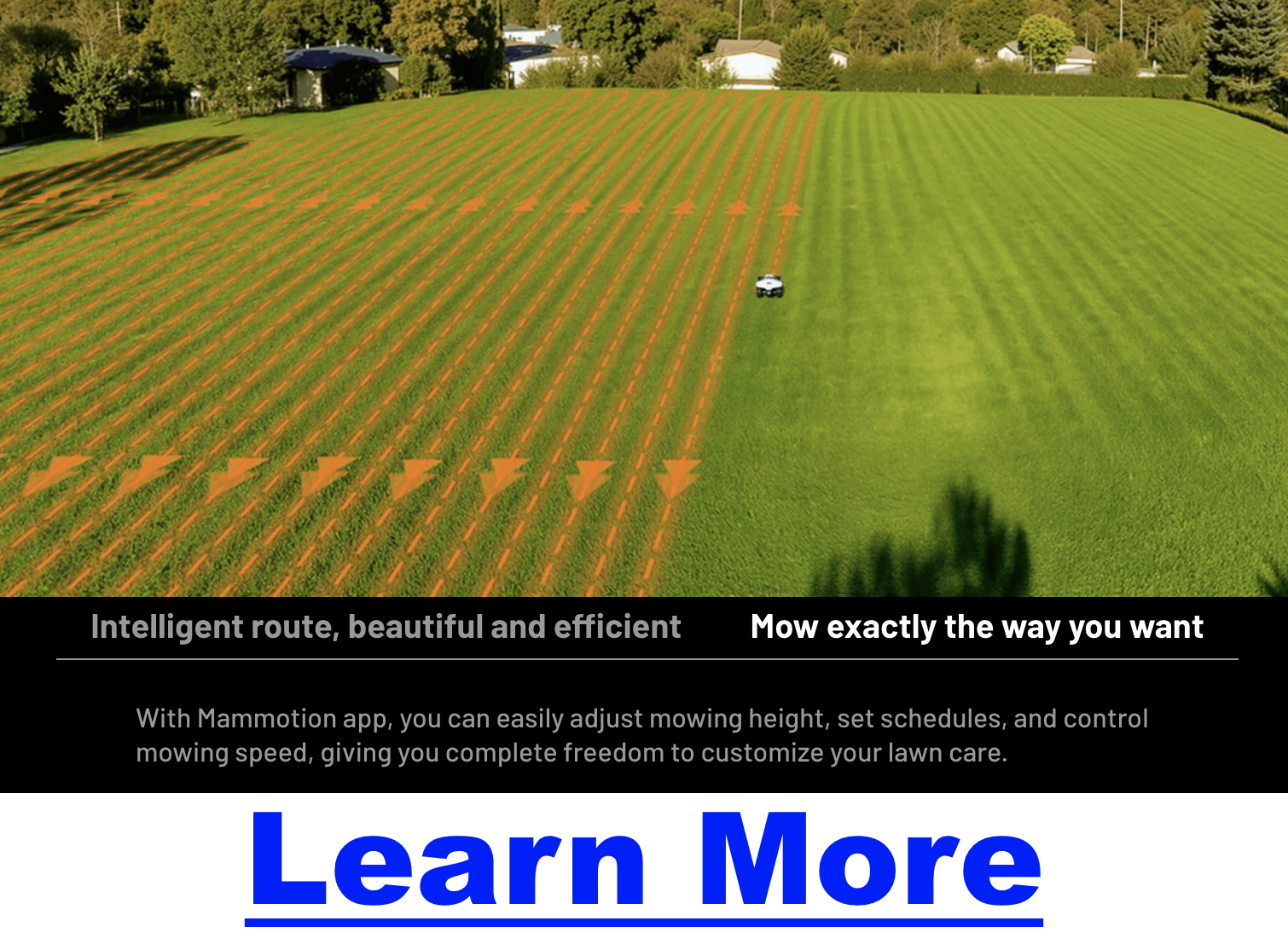Stop Wasting Weekends: The Fastest Way to Mow Your Lawn (Without Lifting a Finger)

Most homeowners spend 1–2 hours every week mowing their lawns. That’s 60–100 hours a year — more than two full work weeks lost to grass cutting. Lawn care experts, from university turf programs to professional landscapers, agree: mowing is the most time-consuming part of lawn maintenance.
If you’ve ever thought, “There has to be a faster way,” you’re not alone. In this post, we’ll share expert-backed mowing strategies to save time, plus a look at smarter technology that can free you from mowing altogether.
Why Mowing Takes So Long
According to turfgrass specialists at the University of Minnesota Extension, mowing is time-intensive for reasons beyond just pushing the mower:
-
Setup time: pulling equipment from storage, fueling or charging, checking oil.
-
Overgrown grass: long blades clump and force extra passes.
-
Edges and cleanup: trimming fences, sidewalks, and bagging clippings often doubles the work.
-
Inconsistent schedule: skipping a week makes the next mow harder and longer.
25 Lawn Cutting Techniques to Save Time
These strategies are drawn from extension research, landscaper best practices, and homeowner experience:
-
Keep mower blades sharp for cleaner, faster cuts.
-
Mow when grass is dry to prevent clogging.
-
Start with a perimeter pass to create turning space.
-
Use straight-line stripes with slight overlap.
-
Alternate directions to reduce ruts.
-
Mow frequently so grass never gets out of hand.
-
Follow the one-third rule (don’t cut more than ⅓ at once).
-
Mulch clippings instead of bagging.
-
Raise mower height in summer to reduce stress.
-
Lower slightly in spring/fall for a crisp finish.
-
Adjust deck height based on conditions.
-
Break your yard into zones for efficiency.
-
Avoid extreme heat for energy savings.
-
Overlap wheel tracks to avoid missed strips.
-
Mow slopes side-to-side for safety.
-
Edge fences/beds first to cut trimming later.
-
Keep tires inflated and deck level.
-
Upgrade to a wide-deck mower if lawn size justifies it.
-
Clear debris first to avoid interruptions.
-
Maintain a consistent walking pace.
-
Aim for late-morning mowing (dew dried, heat low).
-
Keep blades balanced to reduce vibration.
-
Use self-propelled mowers for less effort.
-
Plan efficient mowing routes (rows or spirals).
-
Store equipment properly for faster setup next time.
Pro tip: The National Association of Landscape Professionals estimates that simply sharpening blades regularly can save 10–15% of mowing time each season.
Equipment Upgrades for Faster Mowing
Sometimes efficiency is about the machine, not just the method:
-
Self-propelled mowers: reduce fatigue and maintain a steady pace.
-
Wide-deck walk mowers (21–30″): cut more grass per pass, saving up to 30% on mid-size lawns.
-
Riding and zero-turn mowers: cut mowing time in half for large properties.
Lawn Mowing Options
Here’s how different mowing methods stack up side by side:
| Option | Best For | Time Savings | Upfront Cost | Ongoing Cost | Pros | Cons |
|---|---|---|---|---|---|---|
| Push/Manual Mower | Small lawns, budget | Minimal | $100–$200 | Low | Eco-friendly, low upkeep | Slow, physically demanding |
| Self-Propelled Gas/Electric | Small–medium lawns | 15–25% faster | $300–$600 | Medium | Less effort, versatile | Still time-consuming, fuel costs |
| Wide-Deck Walk Mower | Medium lawns | 25–30% faster | $500–$1,200 | Medium | Covers more per pass | Heavier, pricier |
| Riding/Zero-Turn Mower | Large lawns (½ acre+) | Up to 50% faster | $2,000–$6,000 | High | Fast, comfortable, pro look | Bulky, expensive |
| Robotic Mower (Basic) | Small–medium flat lawns | Automates 80–90% | $700–$1,500 | Low–Medium | Quiet, eco-friendly | Needs boundary wires |
| Robotic Mower (Premium/GPS) | Medium–large, complex lawns | Automates 90–100% | $2,000–$4,500 | Low–Medium | GPS mapping, slope handling | High upfront cost |
When You’re Still Spending Too Much Time
Even with sharper blades and bigger decks, mowing still takes up your weekends. Skip one session, and the grass is harder, taller, and more exhausting to tackle.
The real problem? You’re locked into a never-ending cycle — spring, summer, and fall.
The Smarter Way — Automating Lawn Care
This is where robotic mowers change the game.
-
Older models: required buried wires, ran randomly, struggled on slopes.
-
Newer models: GPS mapping, all-wheel drive, and edge precision for complex yards.
Instead of asking “How do I mow faster?” you can ask “How do I stop mowing altogether?”
Time Saved = Life Gained
The math is simple:
-
DIY mowing: 60–100 hours/year.
-
Hiring landscapers: $2,000+ annually.
-
Gas mower: $400 upfront + ongoing costs.
-
Robotic mower: one-time investment, pays itself off in a few summers.
That’s dozens of weekends returned to you.
FAQ: Common Questions About Saving Time Mowing
Will a robotic mower handle hills?
Yes — advanced models manage slopes of 30–40°.
Safe with kids and pets?
Yes — sensors pause blades when obstacles appear.
Do I need wires?
Some models do, but premium units use GPS or virtual perimeters.
What if it rains?
Most are weather-resistant and auto-pause in unsafe conditions.
Is it worth the cost?
For most homeowners, yes — the time savings and reduced service fees pay off quickly.
Conclusion
Yes, there are dozens of small ways to mow more efficiently. But the only way to truly reclaim your weekends is to step out of the mowing cycle altogether.
With modern automation, your lawn can look pristine — while you spend your time on family, hobbies, or rest.
That’s not just faster mowing. That’s smarter living.

